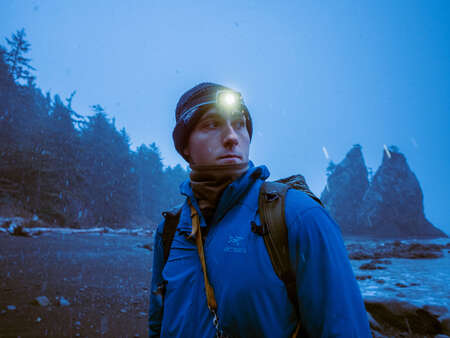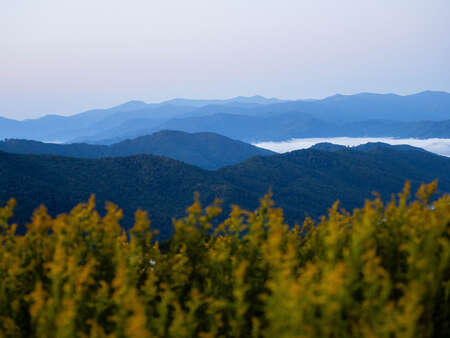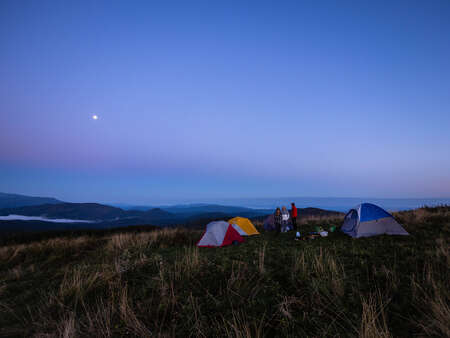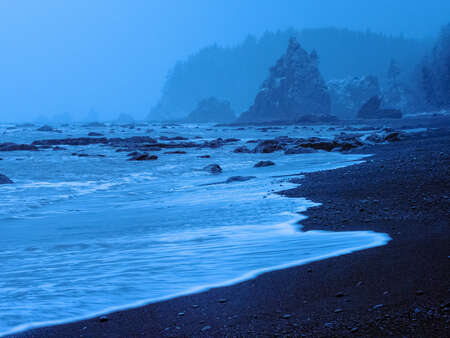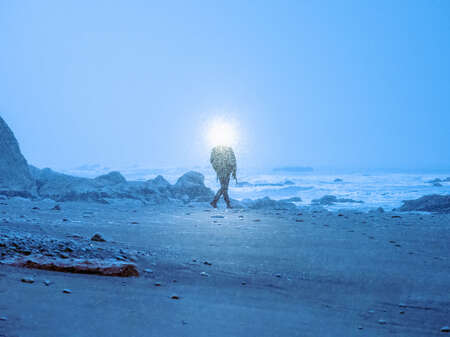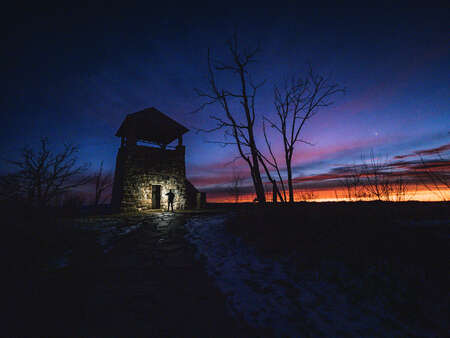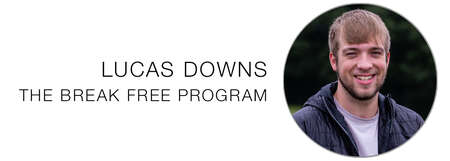It's well known that sunrise and sunset are some of the best times of the day to shoot as a photographer. Golden hour produces a warm tone that is iconic with sunrise and sunset pictures. When the sun is below the horizon, blue hour starts. Blue Hour only lasts from 20 to 40 minutes, sometimes less. Despite the limited time frame this is one of the most exciting times of the day for me, and I have gotten some of my favorite images during blue hour.
I see most photographers packing up their gear as soon as the sun sinks below the horizon. While packing up, they are missing out on potential photographs during blue hour. While I love the warm tones from the sun, the blue tones created once the sun disappears has a mysterious ambiance surrounding it. Once you realize that the sun doesn’t limit your photographic abilities it opens a whole new world of creative ideas to try.
Shooting during blue hour requires a bit of planning in advance.
One of the keys is to note the direction the sun will set or rise. Knowing which side of the sky will be lighter allows you to plan your compositions. You can use the ambient light to help illuminate your subject and create some dramatic photos. I find it much easier to nail a composition without having to worry about shooting around crowds that vanish when the sun is gone.
It is also helpful to know how much time you have. I always check the duration of blue hour, so I have some sort of strategy in my head. While you have to work quick to make the most of it, I find there is no real pressure to make something great.
A fast lens is ideal for handheld blue hour shots. With the in-body stabilization of the Olympus cameras shooting slow shutter speeds at a low aperture becomes easy. My favorite lens to use is the M.Zuiko 7-14mm F2.8 PRO. Ideally, you want any lens with an aperture of F2.8 and below.
While it may be a bit more challenging to use a telephoto lens, it is still very possible. This usually requires an increase in your ISO. Photographers are usually wary about increasing ISO too far due to the increase of noise and grain in the final image. I have found it’s better to have a little more ISO and have a final image that you are happy with instead of not taking a shot.
One of the most challenging things about shooting during this time is the low shutter speeds. It takes some practice to have steady hands. I usually try to hold my breath and brace my arms against my body. This prevents me from carrying a tripod around. A tripod can be good to use while taking landscape shots, but I feel that it limits my movement and creativity. I like to move around a lot and try different compositions, while keeping my setup. Depending on the scene you are trying to capture, this will dictate whether you need a tripod or not. This is why it is beneficial to plan ahead!
Also, don't be afraid of shooting a scene several times. There will definitely be blurry shots among the sharp ones. It isn’t always easy, but I find it very rewarding.
If you aren’t already, you should be shooting photos in RAW during blue hour. Unlike JPEGs, RAW data is uncompressed – which allows for a wider range of color along with preserving highlights and shadows. This allows for an easier time while editing that would be a lot more difficult when shot in jpeg.
I shoot my blue hour photos in auto White Balance. Cameras today are really good at getting the White Balance pretty close to correct. This is why I shoot in RAW, the ability to tweak the white balance of a shot slightly can make or break a photo.
While you can shoot landscapes at blue hour, I prefer to add in a light source to my composition. Whether this be a headlamp, car headlights, or house lights, the opportunities are bountiful. By adding an additional color to your photograph, you add interest. Most light sources have a yellow/orange glow to them. This perfectly complements the blue of the sky and surroundings.
There also is a slight glow on a clear day of the lingering sunset, which is also an exciting thing to capture. There is a peaceful serenity about blue hour that will keep drawing you back.
The best thing about blue hour is the ability to experiment with new things.
You should let your creativity run wild here! You will have gotten all the shots you wanted for the day so there is no pressure to miss something. Try new compositions, incorporate new light sources, and don’t be afraid to bump up your ISO to capture the images in your mind. Most importantly, have fun, the sun will be back, and you can always try again the next day.
Instagram: @lucasraydowns
Lucas is a photographer out of Bardstown, Kentucky based in the southeast. He is often deep in the mountains in search of a feeling found nowhere else. His goal is to awaken the sense of adventure found within us and to share the beauty found around us.
